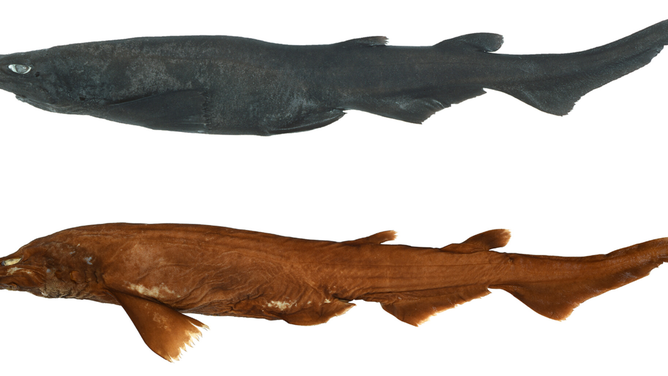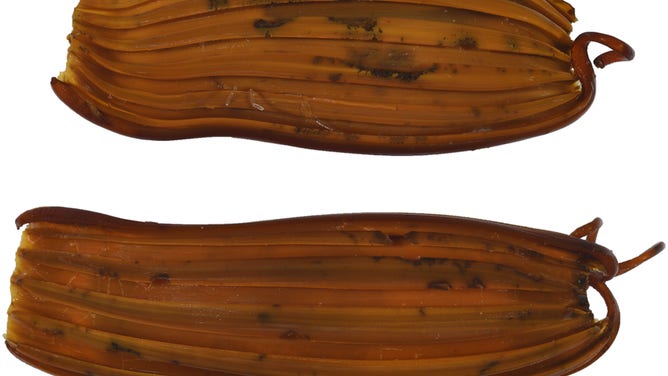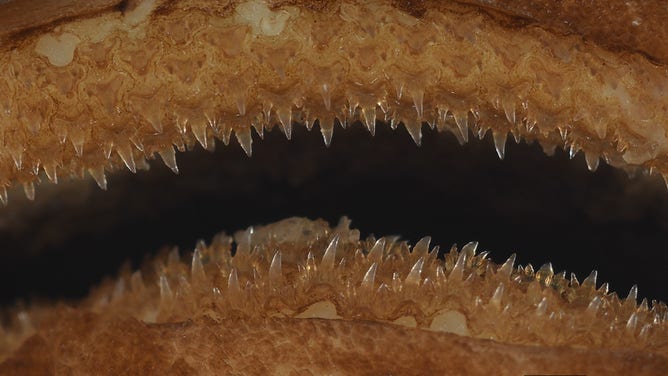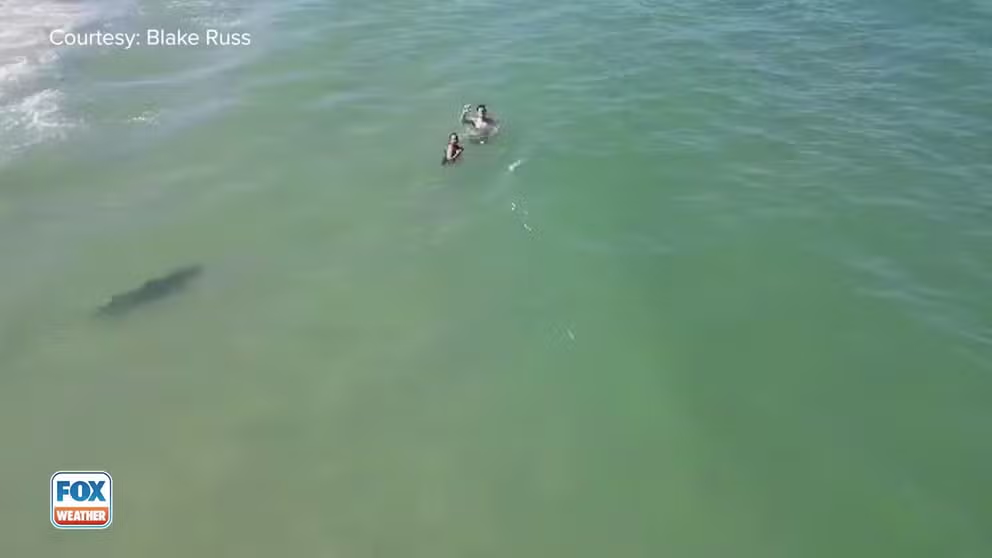Examination of unique shark eggs leads to discovery of new species
Researchers believe eggs housed in museums in the land Down Under are from a species of shark that has been misidentified for years, leading to the rise of the species of Apristurus ovicorrugatus.
Watch as a shark swims dangerously close to beachgoers in Daytona Beach, Florida
Blake Russ captured drone video of a shark swimming next to people enjoying the water off Daytona Beach, Florida, last week.
A new species of shark is believed to live off the Australian coast, but its identification would not have been possible if not for the examination of some unique eggs.
According to research published in the Journal of Fish Biology, the newly discovered variety of demon catsharks has distinctive white eyes and produces eggs that have T-shaped ridges.
Biologists have had some of these eggs in their possession in a pregnant specimen of the shark for decades, but misidentification in the 1990s led to the shark being cataloged as a different species. Researchers compared recently found egg cases to those in the dead female shark that had been in storage and were able to make the discovery. For years, the shark was known as Apristurus sinensis, but given the eggs found in the pregnant specimen had T-shaped ridges, the researchers were able to determine the shark was not of the sinensis variety.

Apristurus ovicorrugatus, a new species of deepwater catshark, was discovered in Australia
(Wiley Online Library: What came first, the shark or the egg? Discovery of a new species of deepwater shark by investigation of egg case morphology / FOX Weather)
The new shark species was named Apristurus ovicorrugatus, which roughly translates to corrugated egg.
"The egg cases of this species have strong T-shaped longitudinal ridges on the dorsal and ventral surfaces, which are unique in the genus Apristurus," the study said.
Researchers said they previously used a specimen's abdomen and teeth to group it with similar-looking sharks, which changed after the egg analysis.

Dorsal view of trawled egg cases of Apristurus ovicorrugatus.
(Wiley Online Library: What came first, the shark or the egg? Discovery of a new species of deepwater shark by investigation of egg case morphology / FOX Weather)
The change in name was not a surprise to authors who said discoveries about this type of shark are constantly being made.
"The number of nominal species in the genus Apristurus is continually increasing as new discoveries are made," study authors stated.
Researchers credited ocean depths for not knowing the exact number of species that exist and said experts better understand marine life where there is a shallower shelf, such as around Taiwan.

Upper and lower anterolateral teeth of the holotype of Apristurus ovicorrugatus
(Wiley Online Library: What came first, the shark or the egg? Discovery of a new species of deepwater shark by investigation of egg case morphology / FOX Weather)
